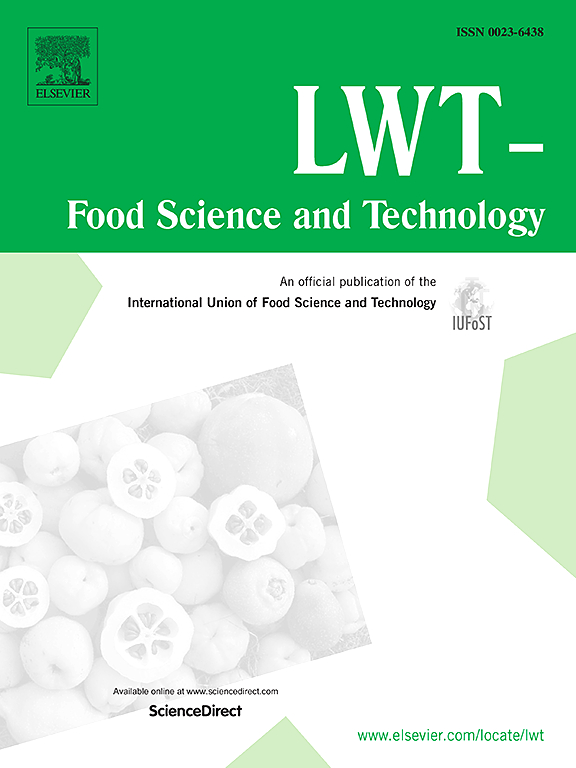Effects of steam explosion on the structural, physicochemical, and functional characteristics of dietary fiber in sorghum grains
IF 6
1区 农林科学
Q1 FOOD SCIENCE & TECHNOLOGY
引用次数: 0
Abstract
The steam explosion (SE) approach is a green and environment-friendly method used for modifying sorghum grains. This study aimed to investigate the effects of SE strength variation on the chemical composition, structural, physicochemical, and functional properties of total dietary fiber (TDF) in sorghum. According to the findings of our study, SE treatment significantly improved the soluble dietary fiber (SDF) content from 2.74% to 6.57% and reduced the insoluble dietary fiber (IDF) content from 13.43% to 5.99%. The results of SEM, FTIR, and XRD indicated that SE treatment caused TDF to collapse and to form a honeycomb structure with many cavities, resulting in a larger particle size, stronger typical sugar esters absorption peaks, and higher crystallinity in TDF. The STA results demonstrated SE treatment improved the thermal stability of TDF. Similarly, SE treatment improved TDF's water/oil holding capacity, swelling, glucose-binding, and α-amylase inhibitory activity. As confirmed by the results of structural and correlation analysis, the appropriate SE treatment caused positive effects in TDF's physicochemical and functional characteristics. From a functional perspective, TDFs with excellent functional properties have a great potential for applications in the food industry, such as anti-digestion additives.

求助全文
约1分钟内获得全文
求助全文
来源期刊

LWT - Food Science and Technology
工程技术-食品科技
CiteScore
11.80
自引率
6.70%
发文量
1724
审稿时长
65 days
期刊介绍:
LWT - Food Science and Technology is an international journal that publishes innovative papers in the fields of food chemistry, biochemistry, microbiology, technology and nutrition. The work described should be innovative either in the approach or in the methods used. The significance of the results either for the science community or for the food industry must also be specified. Contributions written in English are welcomed in the form of review articles, short reviews, research papers, and research notes. Papers featuring animal trials and cell cultures are outside the scope of the journal and will not be considered for publication.
 求助内容:
求助内容: 应助结果提醒方式:
应助结果提醒方式:


